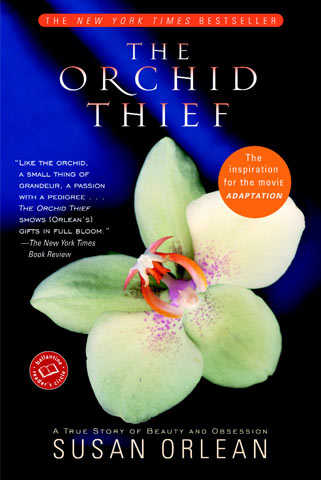Celebrating Earth Day: The Top Ten Books about the Environment
Allyson Floridia ‘16 / Emertainment Monthly Staff Writer
On April 22, 1970, Earth Day was born. Its creator, US Senator Gaylord Nelson, hoped that increasing public awareness of pollution would inspire people to become involved. This involvement would then cause the Senate and House of Representatives to fully address the issue of environmental protection. Forty-five years later, Earth Day is still holding strong. People are becoming more and more aware of nature’s fragility, especially after experiencing the changes wrought by climate change, and environmental groups across the world are rallying to support “go green” efforts. A main source of environmental awareness, information, and motivation is through literature. Environmental literature teaches, inspires, and reminds people of nature’s delicate beauty. Below are the top ten books about nature.
1. Animal, Vegetable, Miracle: A Year of Food Life by Barbara Kingsolver

In this New York Times Bestseller, Kingsolver takes readers on her family’s journey of food life. Rather than purchasing store-bought, processed goods, Kingsolver’s family consumes only food grown by themselves or raised and sold locally. In this way, they hope to reduce their ecological footprint and develop a deeper connection to their habitat. The book suggests small changes everyone can make to eat healthier and greener.
2. The Beekeeper’s Lament by Hannah Nordhaus
Bees are one of the most important animals in any ecosystem. They pollinate flowers and agricultural crops. Without them, many plants will slowly reduce in number. In The Beekeeper’s Lament, Nordhaus tells the story of beekeeper John Miller. Through Miller’s career as a migratory beekeeper, Nordhaus explores the role honeybees play in agriculture, business, and food consumption.
3. The Orchid Thief by Susan Orlean

According to the Smithsonian Environmental Research Center, there are more than 200 species of orchid in America. More than half of them are endangered or threatened. In The Orchid Thief, Orlean delves into the life of John Laroche, an eccentric man on a mission to clone the endangered orchid, Dendrophylax lindenii. (The flower is referenced with its previous name, Polyrrhiza lindenii.) Known also as the ghost orchid, this flower is found in Cuba and southern Florida. The novel was also the basis of inspiration for the Spike Jonze film, Adaptation (2002).
4. Silent Spring by Rachel Carson
Silent Spring was first published as a series of three excerpts in The New Yorker in 1962. It’s also one of the texts that spurred the environmental movement. Here, Carson revealed the dangers of the pesticide DDT. She described the entrance of DDT into the food chain and explained how it harmed insects, birds, and other animals. Upon its publication, various laws concerning air, land, and water were made stricter.
5. The Ten Trusts by Jane Goodall and Marc Bekoff

Jane Goodall is one of the most well-known environmentalists around the world. In 2002, she’s partnered with Marc Bekoff to publish The Ten Trusts. They list ten trusts that people must have to maintain a world in which people live harmoniously with animals. Some of these trusts ask to respect all life, to teach our children to love and respect nature, and to act knowing we are not alone and live with hope. The novel finishes with their vision of a world where cruelty to animals has changed into love for all life.
6. The Lost City of Z by David Grann
Explorer Percy Fawcett dived into the Amazon jungle in 1925. He went in search of the fabled civilization El Dorado, but never came back. Many other explorers have attempted to find evidence of Fawcett’s journey and the location he termed “The Lost City of Z.” Grann decided to make his own adventure into the Amazon after finding several of Fawcett’s hidden diaries. This novel weaves his journey with stories of Fawcett’s exploration. A film adaptation of the book is to be possibly released in 2016. Cast members include Charlie Hunnam and Robert Pattinson.
7. Swampwalker’s Journal: A Wetlands Year by David Carroll

Much of the world’s wetlands have been reclaimed for development. However, there is an enormous amount of biodiversity there. Wetlands also provide a positive ecological function, including water purification and flood protection. In Swampwalker’s Journal, Carroll paints a beautiful picture of the wetlands and their inhabitants. Throughout the novel, he attaches his own illustrations of the various species that live there. He explains the importance of the wetlands and asks for people to preserve it.
8. The Eternal Darkness by Robert Ballard
Ballard is one of the best deep sea explorers. He discovered the wreck of Titanic, led teams that found hydrothermal vents in the floor of the ocean, and was a member of the team that first studied the mid-Atlantic ridge underwater. In his novel The Eternal Darkness, Ballard uses personal anecdotes and stories about William Beebe, Otis Barton, and Auguste and Jacques Piccard to put a unique spin on how twentieth-century investigators have pushed the abilities of technology to its limits.
9. Isaac’s Storm by Erik Larson

Based off of scientist Isaac Cline’s letters and reports, as well as the testimonies of survivors, Erik Larson transcribes the tragic tale of the 1900 Galveston, Texas hurricane. Cline had believed a hurricane in Galveston unbelievable, but natural disasters soon struck around the world. Larson links the heat wave in Chicago and New York, the shrinking of the Bering Glacier, and the intense thunderstorms over Dakar, Senegal, with the hurricane in Texas. He acknowledges that nature is uncontrollable.
10. The Turquoise Ledge: A Memoir by Leslie Silko
The Turquoise Ledge: A Memoir, written by Leslie Silko, is a contemplation of nature’s spirituality. Through personal narrative, Silko illuminates how nature communicates to people and how everything is connected. She combines her family history and the recollection of her childhood to take readers on a walk through the Sonoran desert in Arizona. The novel reads much like a traditional Native American storytelling.